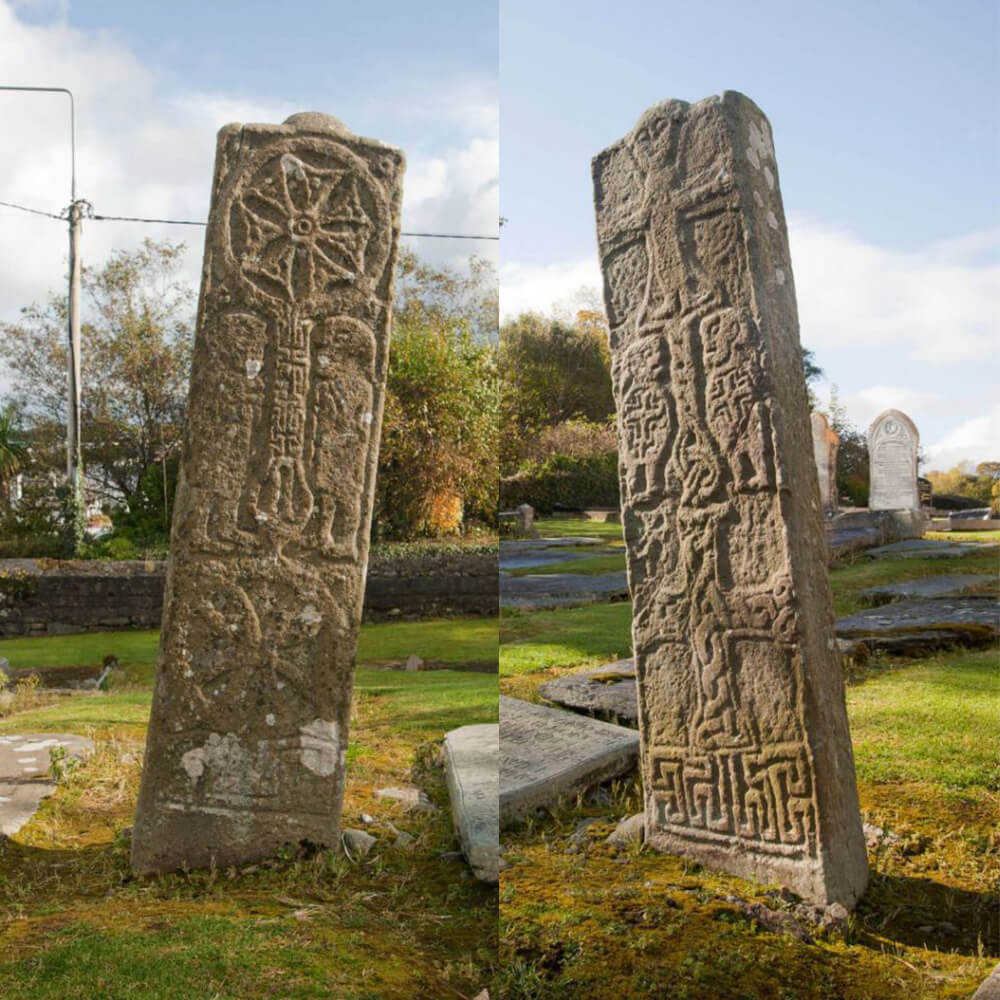The original Irish name of Carndonagh, (Carn Domhnach) means the burial mound of the church, referring to this site which was once the location of a church founded by St. Patrick in the fifth century. It developed into a prosperous and influential monastery. Irish monastic schools were celebrated throughout Europe for their teaching and students came from all over the continent to study not only biblical subjects, but also classical Greek and Roman literature. Carndonagh also gained prominence as a place of pilgrimage due to links with both St Patrick and St Columba.
Places made holy by the blessings and presence of the Saints through relics became the focus of pilgrimages, particularly celebrated on the feast days of the saints. Seeking spirituality through fasting, penance and prayer, the pilgrims would follow a prescribed route. Pillar stones and crosses were made to mark the significant points on these routes.
The Marigold Stone, the Donagh Cross and some other interesting pillars and carvings this fascinating era.

